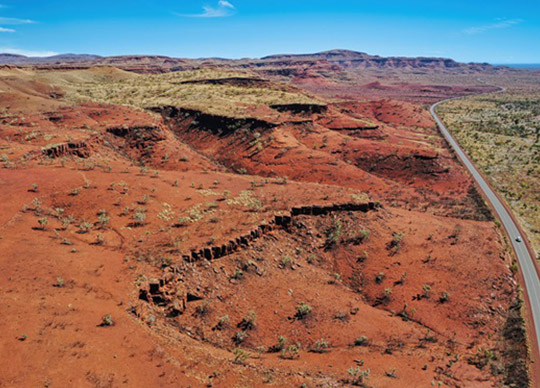
Written by David Burns, Group Executive Telstra Enterprise.
The need is clear. Our peers in mining and heavy industries are telling us they want to strengthen the safety and wellbeing of their workforce, improve energy efficiency, reduce environmental impacts, and increase the efficiency and effectiveness of their operations.
But to achieve this, they need to accelerate innovation and digital transformation to realise the promise of what Industry 4.0 and truly connected operations can deliver.
That’s why we’re expanding our fibre infrastructure across Western Australia’s Pilbara region. Because we want to work hand-in-hand with Australia’s biggest industries to help deliver the innovation that will make them safer, cleaner and smarter.
The $24m investment commencing next financial year, will expand our fibre network, bolstering connectivity and uplifting resiliency for growing industries in the Pilbara and North West of Australia, including mining and clean energy operations.
The project will materially expand Telstra’s fibre footprint in the region, including around 165km of new fibre build for use by Telstra customers. This further builds on our announcement earlier this year of our new end-to-end Industrial Automation capability to support innovation of Australia’s heavy industries – and this week’s Starlink Low Earth Orbit (LEO) satellite connectivity news, and intercity fibre network update.
But what exactly will this fibre infrastructure enable for the Pilbara? Let me share my perspective.
At the heart of Industry 4.0 lies the power of data. To extract that power, our heavy industries rely on robust and resilient fibre networks that are both high capacity and ultra-low latency to support data intensive operations. Our fibre expansion will support the vision of what data-led, connected operations can deliver.
Here’s three examples of what this could look like. Firstly, reducing costs and increasing optimisation with real-time monitoring and control. Consider the efficiency of real time mineralogy identification in mining mill feeds and the potential to protect ore quality and operational performance. Secondly, supporting electrification of remote sites with data-driven decision-making. Through the combination of connected sensors, AI and machine learning, operators can optimise their energy consumption to conditions and production schedules.
Finally, and closest to my heart, is the wellbeing of workers. The canary hasn’t been used in the coal mine for some time, but 24/7 sensors on every aspect of operations can replace or augment routine inspections (think dam walls or ground stability) making our heavy industries safer places for our people.
Underpinning all of this is high-capacity, scalable, low-latency, and resilient digital infrastructure to serve as the central nervous system to support this transformation. We are dedicated to our partnership with our heavy industries and I’m excited to see the positive impact our investments will have on Western Australia industry and beyond.






